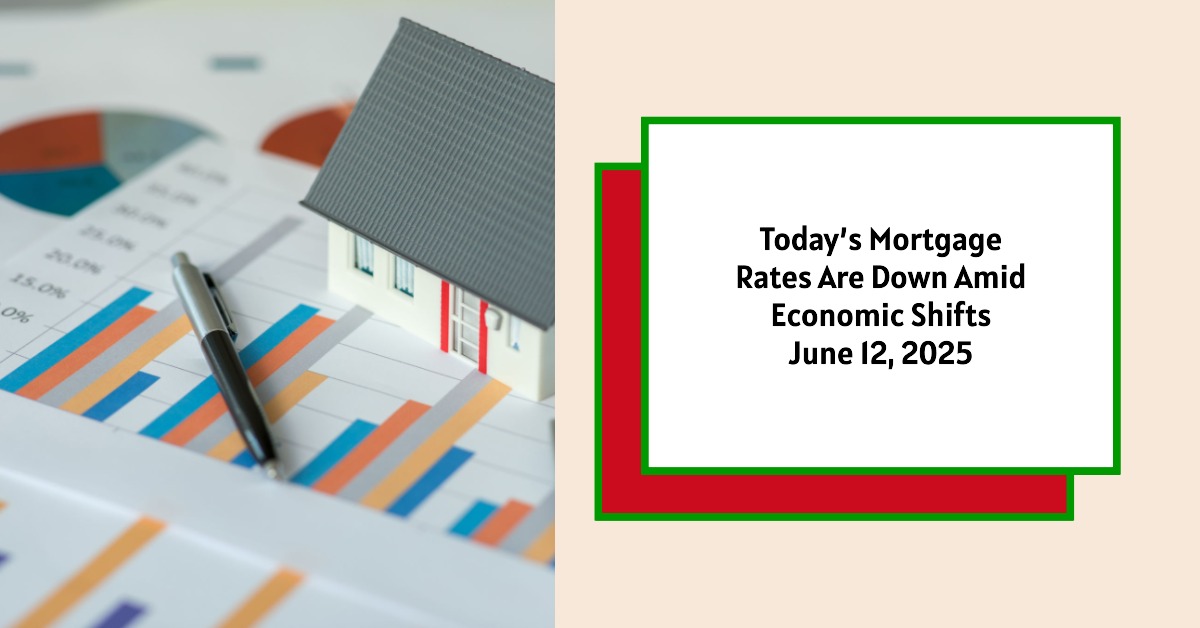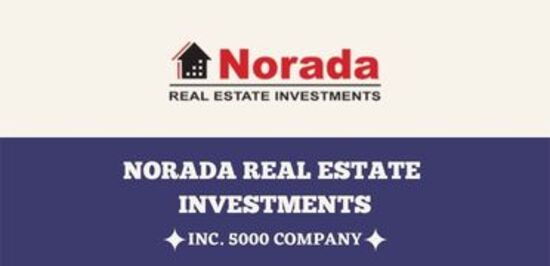Mortgage rates are a vital indicator of the health of the housing market and have a profound impact on consumer purchasing power, refinancing decisions, and overall economic confidence. As of June 12, 2025, mortgage rates have shown signs of slight decline, sparking cautious optimism among prospective homebuyers and current homeowners.
Today’s Mortgage Rates – June 12, 2025: Rates Are Notably Down Amid Economic Shifts
The latest data from Zillow shows a subtle but noteworthy dip in mortgage rates compared to prior weeks. After months of relatively elevated rates, even small decreases can make a substantial difference in affordability for many homebuyers.
National Average Mortgage Rates
| Loan Type | Current Rate | Change from Last Week | APR | APR Change |
|---|---|---|---|---|
| 30-Year Fixed | 6.91% | -0.08% | 7.34% | -0.11% |
| 15-Year Fixed | 5.97% | -0.03% | 6.25% | -0.11% |
| 5-Year ARM | 7.30% | No change | 7.83% | -0.17% |
Key Observations:
- The national average for 30-year fixed-rate mortgages fell slightly from 6.99% last week to 6.91%.
- The 15-year fixed mortgage rate slipped below 6% for the first time in weeks.
- The 5-year ARM rate remains steady, but its APR slightly improved, reflecting marginally better borrowing costs.
This slight decline could stem from a mix of market reactions to economic data releases, inflation trends, and investor expectations for Federal Reserve monetary policy.
Detailed Mortgage Rates by Loan Type
Mortgage rates are not uniform; they differ by loan program, loan term, and borrower qualifications. Below is a breakdown of rates across the major loan categories:
Conforming Loan Rates
| Program | Rate | Weekly Change | APR | Weekly APR Change |
|---|---|---|---|---|
| 30-Year Fixed | 6.91% | -0.08% | 7.34% | -0.11% |
| 20-Year Fixed | 6.31% | -0.51% | 6.73% | -0.51% |
| 15-Year Fixed | 5.97% | -0.09% | 6.25% | -0.11% |
| 10-Year Fixed | 5.93% | No Change | 6.26% | +0.09% |
| 7-Year ARM | 6.64% | -1.17% | 7.51% | -0.72% |
| 5-Year ARM | 7.30% | -0.32% | 7.83% | -0.17% |
The 7-year ARM and 20-year fixed loans show the steepest weekly decline, signaling lender competition in these niches.
Government-Backed Loans
| Program | Rate | Weekly Change | APR | Weekly APR Change |
|---|---|---|---|---|
| 30-Year Fixed FHA | 6.81% | -0.11% | 7.83% | -0.11% |
| 30-Year Fixed VA | 6.36% | -0.09% | 6.57% | -0.09% |
| 15-Year Fixed FHA | 5.70% | +0.01% | 6.67% | 0.00% |
| 15-Year Fixed VA | 5.89% | -0.08% | 6.24% | -0.09% |
Government loans consistently offer slightly better rates for qualified borrowers due to backing by federal agencies, which reduces lender risk.
Jumbo Loans
| Program | Rate | Weekly Change | APR | Weekly APR Change |
|---|---|---|---|---|
| 30-Year Fixed Jumbo | 7.30% | -0.12% | 7.76% | -0.04% |
| 15-Year Fixed Jumbo | 6.54% | -0.23% | 6.82% | -0.19% |
| 7-Year ARM Jumbo | 7.53% | No Change | 8.06% | No Change |
| 5-Year ARM Jumbo | 7.16% | -0.51% | 7.77% | -0.28% |
Insights:
- Jumbo loan rates remain higher than conforming loans, reflecting greater lender risk due to larger loan amounts.
- Adjustable-rate jumbo loans have also shown downward movement, which could appeal to high-income borrowers seeking smaller payments in early years.
Factors Influencing Current Mortgage Rates
Understanding what drives mortgage rates helps borrowers anticipate trends and make better decisions.
Federal Reserve Monetary Policy
While mortgage rates do not directly track the Fed’s federal funds target rate, Fed policy heavily influences long-term interest rates through bond markets. Currently, the Federal Reserve is in a holding pattern, waiting on further economic data to determine if rate cuts are warranted. If the Fed cuts rates later this year, mortgage rates could fall in response.
Inflation and Economic Data
Mortgage rates generally rise with inflation since lenders demand higher yields to offset declining purchasing power. Recent inflation trends showing moderating price increases have contributed to downward pressure on mortgage rates.
Bond Market Movements
Mortgage rates closely correlate to yields on 10-year Treasury notes. Increased demand for safe-haven Treasuries can drive yields lower, leading to better mortgage rate offers.
Housing Market Conditions
A slowdown in home sales and price appreciation can indirectly influence rates by altering lender risk appetite and competition.
How To Get The Best Mortgage Rates Today
Securing the lowest possible rate requires more than timing the market. Here are actionable tips to optimize your mortgage application:
1. Strengthen Your Credit Profile
Your credit score is one of the most significant factors affecting your mortgage rate. Steps include:
- Paying down credit card balances.
- Avoiding new credit inquiries.
- Correcting errors on your credit report.
Lenders reward higher credit scores with lower interest rates because those borrowers are statistically less risky.
2. Maintain Stable Income and Employment
Verifiable and steady income reassures lenders, sometimes resulting in better loan offers.
3. Save for a Larger Down Payment
Higher down payments reduce loan-to-value ratios, decreasing lender risk and unlocking better rates and loan programs.
4. Shop and Negotiate with Multiple Lenders
Don’t settle for the first offer — get rate quotes from banks, credit unions, mortgage brokers, and online lenders. Compare not only interest rates but also APRs and closing costs to understand the total cost.
5. Consider Points and Loan Terms
Paying mortgage points upfront can reduce the interest rate. Additionally, choosing a shorter loan term (e.g., 15 years) usually yields lower rates, though monthly payments increase.
6. Lock Your Rate at the Right Time
Once you find a favorable rate, lock it to protect against upward volatility during the underwriting process. Rate lock durations vary, so ask your lender about options.
Will Mortgage Rates Go Down?
Predicting future mortgage rates remains inherently uncertain but analysis from expert organizations provides insight:
Expert Forecasts for 2025 and Beyond
- Fannie Mae expects the 30-year fixed mortgage rate to average near 6.1% by the end of 2025.
- Freddie Mac reports rates have ranged from 6.08% to 7.04% during early 2025.
- The National Association of Realtors projects an average 6.4% in 2025, gradually falling to 6.1% in 2026.
- Realtor.com anticipates rates dropping slightly to 6.2% toward year-end.
Factors That Could Lower Rates:
- Federal Reserve rate cuts if economic growth slows.
- Continued moderation in inflation, easing bond yields.
- Increased demand for mortgage-backed securities (MBS) supporting loan pricing.
Risks That Could Keep Rates Elevated:
- Persistent inflation pressures.
- Robust economic growth driving bond yields higher.
- Global economic instability increasing market volatility.
Read More:
Mortgage Rates Trends as of June 11, 2025
Understanding Current Refinance Rates
Refinancing remains an important strategy for many homeowners seeking to capitalize on falling rates or adjust loan terms.
Refinance Rates Snapshot as of June 12, 2025
| Loan Type | Refinance Rate | Weekly Change | APR | Weekly APR Change |
|---|---|---|---|---|
| 30-Year Fixed | 7.09% | -0.06% | 7.40% | -0.10% |
| 15-Year Fixed | 6.00% | -0.01% | 6.26% | -0.03% |
| 5-Year ARM | 7.81% | +0.87% | 8.10% | +0.15% |
| 30-Year Fixed FHA | 6.53% | -0.16% | 7.55% | -0.17% |
| 30-Year Fixed VA | 6.71% | +0.13% | 6.93% | +0.16% |
Refinance rates tend to be slightly higher than purchase mortgage rates due to underwriting risk and fees. The 5-year ARM refinance rate saw a notable increase, reflecting possible changes in adjustable rate market demand.
Should You Refinance Your Mortgage in 2025?
Refinancing is not a one-size-fits-all solution. Consider your individual financial situation:
When to Refinance:
- Lower Interest Rates: Refinancing makes sense when current rates are at least 0.5% to 1% lower than your original mortgage. This gap helps offset closing costs and makes monthly payments more affordable.
- Shortening Loan Term: Refinancing to a shorter-term loan can save thousands in interest over the life of the mortgage, though monthly payments increase.
- Switching from ARM to Fixed: Homeowners concerned about future rate hikes may refinance from an adjustable-rate mortgage to a fixed-rate loan for payment stability.
- Cash-Out Refinancing: Accessing equity through refinancing can fund home improvements, college tuition, or debt consolidation but increases loan balance and monthly payments.
Important Considerations:
- Calculate the break-even point to determine how long it will take for the savings to cover refinancing costs.
- Evaluate the impact on your credit score, which may dip temporarily after refinancing.
- Assess your plans for staying in the home; refinancing is more beneficial if you plan to keep the property long term.
Meeting with a mortgage advisor for a personalized analysis is highly recommended.
Key Takeaways
- Mortgage rates across the board are trending slightly downward as of June 12, 2025, providing opportunities for buyers and refinancers.
- Rates vary considerably by loan type, with government-backed loans generally offering more favorable terms.
- Economic factors, Federal Reserve policy, and inflation continue to be primary drivers of mortgage rate fluctuations.
- Borrowers can secure better rates through strong credit, diligent lender shopping, and prudent financial planning.
- Expert forecasts suggest modest rate declines in the latter half of 2025 but expect some ongoing volatility.
- Refinancing remains a powerful tool if rates are favorable and long-term savings surpass refinancing costs.
Summary
As of mid-2025, mortgage rates demonstrate a modest easing, with the 30-year fixed rate averaging 6.91%. This environment offers a cautiously optimistic outlook for homebuyers and homeowners seeking to refinance. Understanding the numerous factors that influence rates, from Federal Reserve decisions to inflation data, empowers consumers to navigate the housing finance landscape more effectively.
Securing the best mortgage rate requires preparation, credit strength, and market insight, while the decision to refinance hinges on individual financial goals and current rate comparisons. Although uncertainty remains regarding the pace of future rate declines, staying informed and proactive will enable borrowers to capitalize on opportunities as the year progresses.
Invest Smarter in a High-Rate Environment
With mortgage rates remaining elevated this year, it's more important than ever to focus on cash-flowing investment properties in strong rental markets.
Norada helps investors like you identify turnkey real estate deals that deliver predictable returns—even when borrowing costs are high.
HOT NEW LISTINGS JUST ADDED!
Connect with a Norada investment counselor today (No Obligation):
(800) 611-3060
Also Read:
- Will Mortgage Rates Go Down in 2025: Morgan Stanley's Forecast
- Expect High Mortgage Rates Until 2026: Fannie Mae's 2-Year Forecast
- Mortgage Rate Predictions 2025 from 4 Leading Housing Experts
- Mortgage Rates Forecast for the Next 3 Years: 2025 to 2027
- 30-Year Mortgage Rate Forecast for the Next 5 Years
- 15-Year Mortgage Rate Forecast for the Next 5 Years
- Why Are Mortgage Rates Going Up in 2025: Will Rates Drop?
- Why Are Mortgage Rates So High and Predictions for 2025
- Will Mortgage Rates Ever Be 3% Again in the Future?
- Mortgage Rates Predictions for Next 2 Years
- Mortgage Rate Predictions for Next 5 Years
- Mortgage Rate Predictions: Why 2% and 3% Rates are Out of Reach
- How Lower Mortgage Rates Can Save You Thousands?
- How to Get a Low Mortgage Interest Rate?
- Will Mortgage Rates Ever Be 4% Again?



